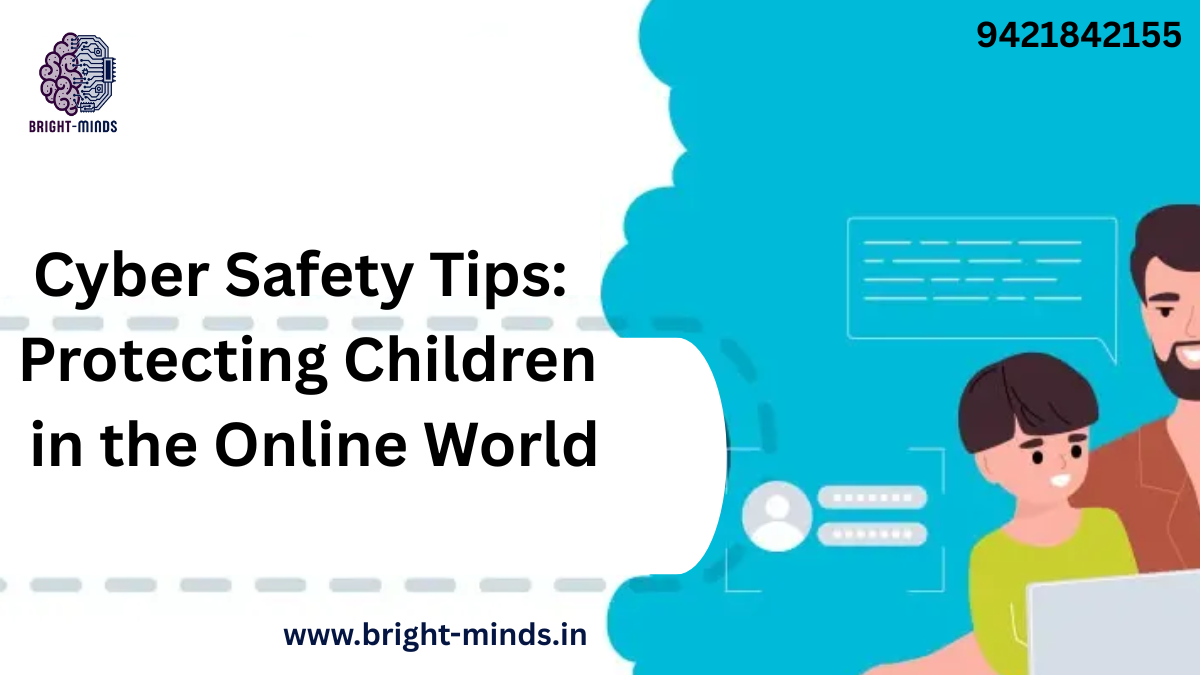The internet is a powerful tool for learning, connection, and creativity. But for children, it can also be a risky space filled with hidden dangers—from cyberbullying to identity theft and inappropriate content. As parents, teachers, and even employers with working parents in our teams, understanding cyber safety for children has never been more important.
Today, kids spend more time online than ever before—studying, gaming, or socializing. While this opens doors to exciting opportunities, it also makes them vulnerable to cyber risks. The good news? With the right awareness and proactive steps, we can create a safer digital environment for the next generation.
Why Cyber Safety Matters for Kids
Children are naturally curious and trusting, which makes them easy targets for online threats. Some of the most common risks include:
- Cyberbullying: Harassment through social media, gaming platforms, or messaging apps.
- Online Predators: Strangers posing as friends to exploit children.
- Inappropriate Content: Exposure to violence, explicit material, or harmful misinformation.
- Identity Theft: Kids unknowingly sharing personal details that can be misused.
These risks don’t just impact children’s mental health but can also affect their long-term well-being and academic performance.
Industry Insights: The Growing Concern of Online Safety
- According to a 2024 UNICEF report, 1 in 3 internet users worldwide is a child, and cybercrime targeting children has surged in the last five years.
- The global market for cyber safety education tools and parental control apps is expected to grow by 15% annually until 2030.
- Leading companies and schools are investing in digital literacy programs to ensure children understand safe online practices.
These statistics show a clear trend: cyber safety isn’t just a family issue—it’s a societal and workplace concern. Employers are also recognizing the stress parents face around their children’s online exposure and are supporting awareness initiatives.
Practical Cyber Safety Tips for Parents and Educators
Protecting children online doesn’t mean isolating them from technology. Instead, it’s about teaching them smart, responsible digital habits. Here are some effective strategies:
- Educate Early
Explain in age-appropriate language what’s safe and unsafe online. Teach children not to share personal information such as their full name, address, or school name. - Set Clear Boundaries
Establish screen time limits and decide which apps or websites are appropriate. Use parental control settings on devices and browsers. - Encourage Open Communication
Let children know they can come to you if they encounter anything uncomfortable online. A supportive environment prevents secrecy. - Monitor Online Activity
Check browsing history and use monitoring apps, but balance this with trust. Transparency is key—let kids know why you’re monitoring. - Strengthen Privacy Settings
Teach kids how to set strong passwords, use privacy features on social media, and avoid suspicious links or downloads. - Lead by Example
Practice good cyber hygiene yourself—whether that’s avoiding oversharing online, verifying news sources, or respecting digital etiquette.
Relatable Example: A Parent’s Experience
Consider this scenario: An 11-year-old child downloads a free game without parental knowledge. Along with the game comes hidden malware that steals login information. The family only realizes when their bank account shows unusual activity.
Now imagine if the parent had earlier explained the risks of “free” downloads and taught the child to seek permission before installing apps. A simple conversation could have prevented a stressful situation.
Real-World Applications: Why Companies Should Care
Cyber safety isn’t just a parenting concern—it’s a workplace issue too. Employees distracted by worries about their children’s online safety are less focused and productive. Forward-thinking companies now offer:
- Workshops on digital parenting for employees.
- Access to family-friendly cyber safety tools as part of benefits packages.
- Awareness campaigns during Cybersecurity Month.
This not only supports employees but also builds a reputation as a responsible, family-first organization.
Market Trend: EdTech and Cyber Safety
The rise of educational technology (EdTech) has further accelerated the need for online safety. With virtual classrooms, children are constantly sharing assignments, emails, and even personal videos online. Schools are now integrating cyber safety modules into the curriculum, teaching children how to navigate the digital world responsibly.
Taking the First Step
Cyber safety is no longer optional—it’s a necessity. By teaching children how to stay safe online, we’re not only protecting them today but also equipping them with essential life skills for the future.
Think of it like financial literacy: starting early builds lifelong habits that pay dividends. The earlier children learn about digital responsibility, the more confident and resilient they’ll be in navigating the online world.
👉 Ready to empower your family or organization with deeper insights and tools? Explore our advanced cyber safety resources and training programs on our website today. Together, we can make the online world safer for every child.
Also Read:
https://bright-minds.in/unlocking-word-meaning-for-class-ukg-english-to-hindi/‘

